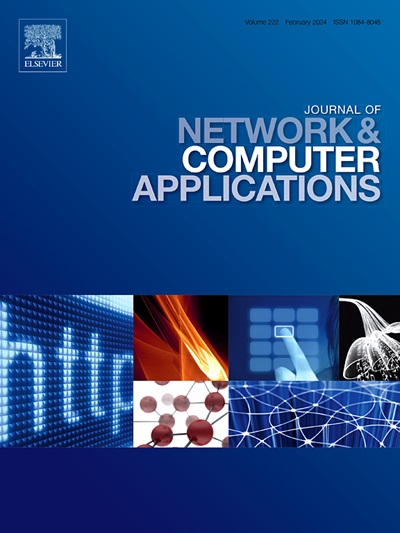SPARTA-GEMSTONE: A two-phase approach for efficient node placement in 3D WSNs under Q-Coverage and Q-Connectivity constraints
IF 8
2区 计算机科学
Q1 COMPUTER SCIENCE, HARDWARE & ARCHITECTURE
引用次数: 0
Abstract
Wireless sensor networks (WSNs) face challenges in achieving robust target coverage and connectivity, particularly when varying priorities for targets are modeled with -Coverage and -Connectivity constraints. However, existing studies often neglect minimizing the number of nodes under these constraints in 3D environments or focus on sensor-to-sensor connections, which are less suitable for target-oriented networks. This paper bridges these gaps by proposing a novel two-phase heuristic approach. In Phase I, we introduce SPARTA, with two variants (SPARTA-CC and SPARTA-CP), to address -Coverage. Phase II employs GEMSTONE, a heuristic algorithm based on a minimum spanning tree, to ensure -Connectivity. Our method is evaluated on a real-world 3D dataset and compared against baseline methods. The results demonstrate that our approach significantly reduces the number of nodes while improving running speed. Our proposal can save 13% of the node count while running 2370 times faster than the current state-of-the-art method. These contributions advance the state of the art in WSN design and hold significant implications for efficient and fault-tolerant network deployment in practical scenarios.
SPARTA-GEMSTONE:在q -覆盖和q -连通性约束下,3D WSNs中有效节点放置的两阶段方法
无线传感器网络(wsn)在实现稳健的目标覆盖和连通性方面面临挑战,特别是当目标的不同优先级受到Q-Coverage和Q-Connectivity约束时。然而,现有的研究往往忽略了在这些约束下最小化3D环境中的节点数量,或者专注于传感器到传感器的连接,这些都不太适合面向目标的网络。本文通过提出一种新的两阶段启发式方法来弥合这些差距。在第一阶段,我们引入SPARTA,它有两个变体(SPARTA- cc和SPARTA- cp)来处理Q-Coverage。第二阶段采用基于最小生成树的启发式算法GEMSTONE来确保Q-Connectivity。我们的方法在真实世界的3D数据集上进行了评估,并与基线方法进行了比较。结果表明,我们的方法在提高运行速度的同时显著减少了节点数量。我们的建议可以节省13%的节点数,同时运行速度比目前最先进的方法快2370倍。这些贡献推动了WSN设计的发展,并对实际场景中高效和容错的网络部署具有重要意义。
本文章由计算机程序翻译,如有差异,请以英文原文为准。
求助全文
约1分钟内获得全文
求助全文
来源期刊

Journal of Network and Computer Applications
工程技术-计算机:跨学科应用
CiteScore
21.50
自引率
3.40%
发文量
142
审稿时长
37 days
期刊介绍:
The Journal of Network and Computer Applications welcomes research contributions, surveys, and notes in all areas relating to computer networks and applications thereof. Sample topics include new design techniques, interesting or novel applications, components or standards; computer networks with tools such as WWW; emerging standards for internet protocols; Wireless networks; Mobile Computing; emerging computing models such as cloud computing, grid computing; applications of networked systems for remote collaboration and telemedicine, etc. The journal is abstracted and indexed in Scopus, Engineering Index, Web of Science, Science Citation Index Expanded and INSPEC.
 求助内容:
求助内容: 应助结果提醒方式:
应助结果提醒方式:


